Unraveling the Microbiome of Necrotizing Enterocolitis: Insights in Novel Microbial and Metabolomic Biomarkers
- PMID: 34704805
- PMCID: PMC8549755
- DOI: 10.1128/Spectrum.01176-21
Unraveling the Microbiome of Necrotizing Enterocolitis: Insights in Novel Microbial and Metabolomic Biomarkers
Abstract
Necrotizing enterocolitis (NEC) is among the most relevant gastrointestinal diseases affecting mostly prematurely born infants with low birth weight. While intestinal dysbiosis has been proposed as one of the possible factors involved in NEC pathogenesis, the role of the gut microbiota remains poorly understood. In this study, the gut microbiota of preterm infants was explored to highlight differences in the composition between infants affected by NEC and infants prior to NEC development. A large-scale gut microbiome analysis was performed, including 47 shotgun sequencing data sets generated in the framework of this study, along with 124 retrieved from publicly available repositories. Meta-analysis led to the identification of preterm community state types (PT-CSTs), which recur in healthy controls and NEC infants. Such analyses revealed an overgrowth of a range of opportunistic microbial species accompanying the loss of gut microbial biodiversity in NEC subjects. Moreover, longitudinal insights into preterm infants prior to NEC development indicated Clostridium neonatale and Clostridium perfringens species as potential biomarkers for predictive early diagnosis of this disease. Furthermore, functional investigation of the enzymatic reaction profiles associated with pre-NEC condition suggested DL-lactate as a putative metabolic biomarker for early detection of NEC onset. IMPORTANCE Necrotizing enterocolitis (NEC) is a severe gastrointestinal disease occurring predominantly in premature infants whose etiology is still not fully understood. In this study, the analysis of infant fecal samples through shotgun metagenomics approaches revealed a marked reduction of the intestinal (bio)diversity and an overgrowth of (opportunistic) pathogens associated with the NEC development. In particular, dissection of the infant's gut microbiome before NEC diagnosis highlighted the potential involvement of Clostridium genus members in the progression of NEC. Remarkably, our analyses highlighted a gastrointestinal DL-lactate accumulation among NEC patients that might represent a novel potential functional biomarker for the early diagnosis of NEC.
Keywords: NEC; metagenomics; microbiota; necrotizing enterocolitis; shotgun.
Figures
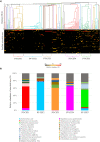
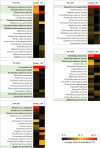
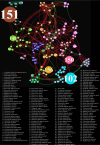
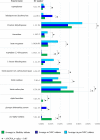
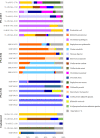
Similar articles
-
Premature neonatal gut microbial community patterns supporting an epithelial TLR-mediated pathway for necrotizing enterocolitis.BMC Microbiol. 2021 Aug 6;21(1):225. doi: 10.1186/s12866-021-02285-0. BMC Microbiol. 2021. PMID: 34362295 Free PMC article.
-
Dysbiosis anticipating necrotizing enterocolitis in very premature infants.Clin Infect Dis. 2015 Feb 1;60(3):389-97. doi: 10.1093/cid/ciu822. Epub 2014 Oct 23. Clin Infect Dis. 2015. PMID: 25344536 Free PMC article.
-
Longitudinal analysis of the premature infant intestinal microbiome prior to necrotizing enterocolitis: a case-control study.PLoS One. 2015 Mar 5;10(3):e0118632. doi: 10.1371/journal.pone.0118632. eCollection 2015. PLoS One. 2015. PMID: 25741698 Free PMC article.
-
Gut microbiota and the pathogenesis of necrotizing enterocolitis in preterm neonates.Future Microbiol. 2016;11(2):273-92. doi: 10.2217/fmb.15.136. Epub 2016 Feb 8. Future Microbiol. 2016. PMID: 26855351 Review.
-
Necrotizing Enterocolitis and the Preterm Infant Microbiome.Adv Exp Med Biol. 2019;1125:25-36. doi: 10.1007/5584_2018_313. Adv Exp Med Biol. 2019. PMID: 30680646 Review.
Cited by
-
Impact of cryoprotective agents on human gut microbes and in vitro stabilized artificial gut microbiota communities.Microb Biotechnol. 2024 Jun;17(6):e14509. doi: 10.1111/1751-7915.14509. Microb Biotechnol. 2024. PMID: 38878269 Free PMC article.
-
Alterations of the gut microbiota and short chain fatty acids in necrotizing enterocolitis and food protein-induced allergic protocolitis infants: A prospective cohort study.Front Cell Infect Microbiol. 2022 Nov 21;12:1030588. doi: 10.3389/fcimb.2022.1030588. eCollection 2022. Front Cell Infect Microbiol. 2022. PMID: 36478672 Free PMC article.
-
Development of Gut Microbiota in the First 1000 Days after Birth and Potential Interventions.Nutrients. 2023 Aug 20;15(16):3647. doi: 10.3390/nu15163647. Nutrients. 2023. PMID: 37630837 Free PMC article. Review.
-
Limosilactobacillus reuteri in immunomodulation: molecular mechanisms and potential applications.Front Immunol. 2023 Aug 9;14:1228754. doi: 10.3389/fimmu.2023.1228754. eCollection 2023. Front Immunol. 2023. PMID: 37638038 Free PMC article. Review.
-
Necrotizing enterocolitis: current understanding of the prevention and management.Pediatr Surg Int. 2024 Jan 10;40(1):32. doi: 10.1007/s00383-023-05619-3. Pediatr Surg Int. 2024. PMID: 38196049 Free PMC article. Review.
References
-
- Zozaya C, García González I, Avila-Alvarez A, Oikonomopoulou N, Sánchez Tamayo T, Salguero E, Saenz de Pipaón M, García-Muñoz Rodrigo F, Couce ML. 2020. Incidence, treatment, and outcome trends of necrotizing enterocolitis in preterm infants: a multicenter cohort study. Front Pediatr 8. doi:10.3389/fped.2020.00188. - DOI - PMC - PubMed
-
- Milani C, Duranti S, Bottacini F, Casey E, Turroni F, Mahony J, Belzer C, Delgado Palacio S, Arboleya Montes S, Mancabelli L, Lugli GA, Rodriguez JM, Bode L, de Vos W, Gueimonde M, Margolles A, van Sinderen D, Ventura M. 2017. The first microbial colonizers of the human gut: composition, activities, and health implications of the infant gut microbiota. Microbiol Mol Biol Rev 81. doi:10.1128/MMBR.00036-17. - DOI - PMC - PubMed
Publication types
MeSH terms
Substances
Supplementary concepts
LinkOut - more resources
Full Text Sources
Medical

